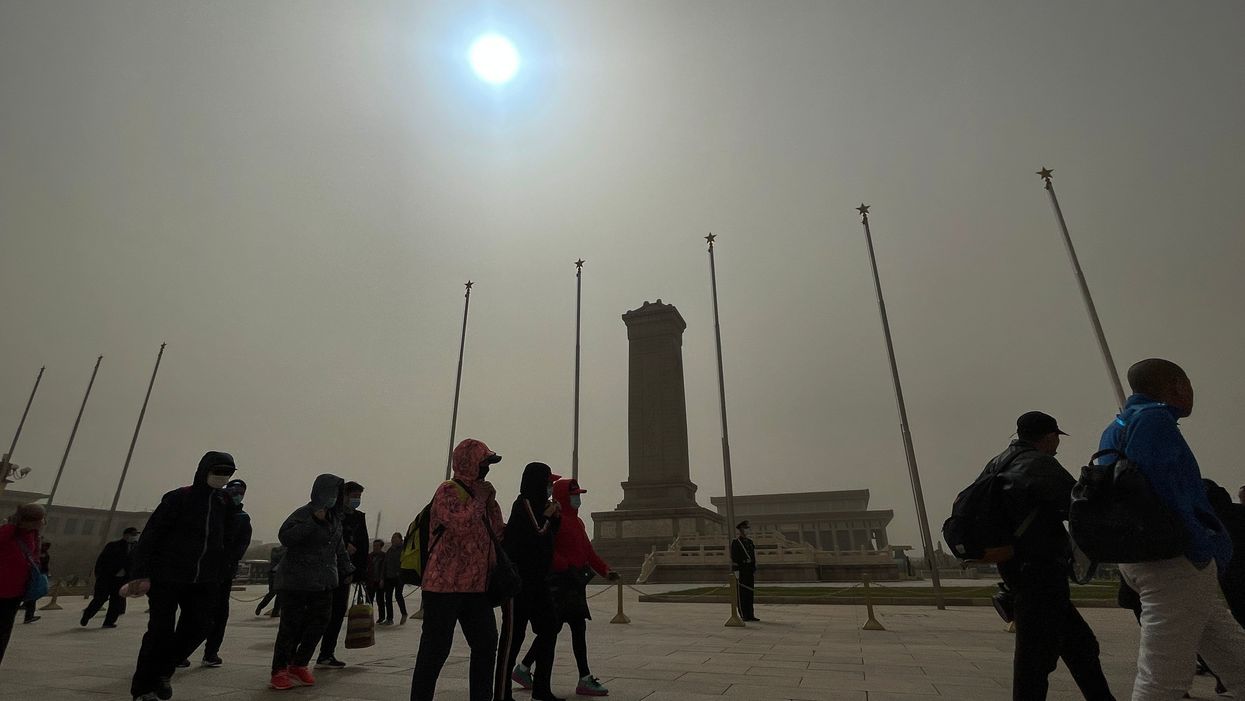
The sky has swapped the colours around thanks to a sandstorm that is ravaging through the capital city
The second sandstorm in two weeks in China has switched the colours in the sky, giving the impression of a blue sun and a yellow background.
The capital city Beijing was covered with a cloud of thick dust holding dangerous chemical particles, which came from Mongolia and north-western China, areas seriously affected by drought at the moment.
Visibility was affected, especially at the tops of buildings. People walking in the street were made to block their eyes when the sand blustered throughout the city.
On Friday, the China Meteorological Administration sent out a yellow warning of the sandstorm. It arrived on Sunday, yanking pollution levels to a maximum of 500, according to air quality index in Beijing. The pollutant PM10 surpassed 2,000 micrograms per cubic metre, which is a substance that can go through the lungs.
Smaller pollutants, such as PM2.5, reached 462. The World Health Organisation recommends it be at 25 as it can enter the bloodstream.
Read more:
- Wendy’s chicken sandwich nightmare sparks fierce TikTok debate
- Priti Patel gets the meme treatment after Home Office spends £77,000 on eyebrows
- The key people moving to GB News and who else is rumoured to be joining them
- These maps and images show exactly what went wrong with Ever Given in the Suez
“The dynamics for sandstorms and transmission is good now,” Zhang Tao, the chief forecaster for the Central Meteorological Observatory told the People’s Daily today.
Zhang explained that less snow and rain in north and north-west China had led to drier weather, along with windier conditions there is which caused the sandstorm. March temperatures were recorded to be 6 degree Celsius higher than usual. The desert has extended after the deforestation of the north of the country. Trees act as a wall to sandstorms, and getting rid of the trees allows for hot air and sand to travel more quickly to urban areas.
Chaos has ensued at airports like in Inner Mongolia, where over half of the flights were cancelled to Baotou and Chifeng airports, according to the South China Morning Post.













